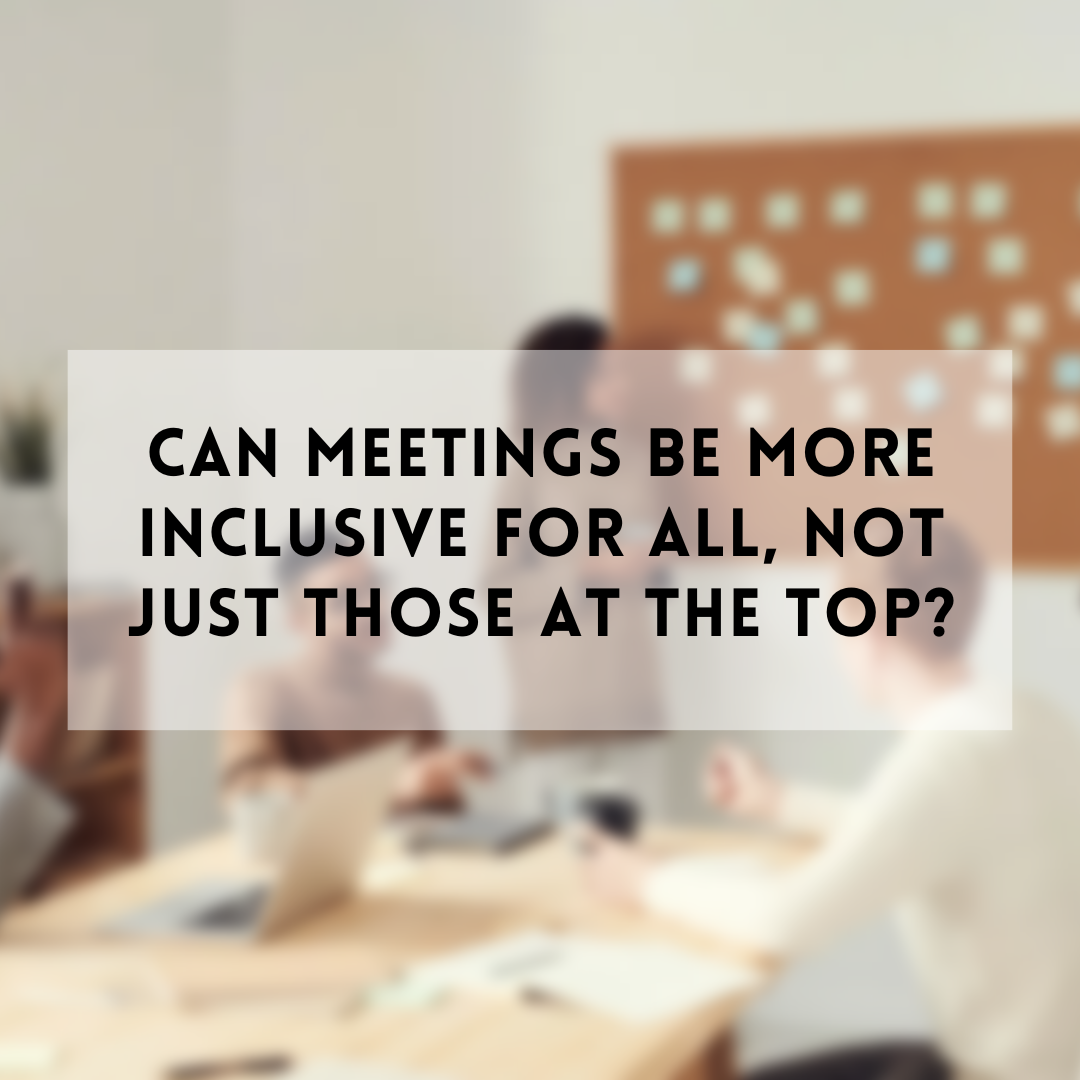Can meetings be more inclusive for all, not just those at the top?
With more diverse perspectives gaining seats at the table, how can we ensure voices are actually being heard?
At the beginning of my career I had a hard time building confidence as a female in a male-dominated tech world. The rooms where the decisions were made favored the typical players: those with the loudest voice, highest pay grade, and biggest title (usually cishet white men).
As a facilitator, I continue to observe and mitigate how these power dynamics play out. We have a long way to go before the everyday meeting allows minorities to contribute as equals, and I have some ideas about how we could create a fairer playing field for all.
As a note, I’d like to clarify that I’m writing this from the POV of a cishet white woman who is striving for a better share of voice that is intersectional. That said, these suggestions are in no way representative of all the ways in which existing structures should be revised or dismissed altogether in order to benefit people of any race, gender identity, sexual preference, ability, nationality, size, class, and beyond.
Now, let’s take this thing apart.
The Reality: A person’s power is related to their ability to decide and influence. Often, people who are persuasive typically have higher salaries and titles. By default, their opinions are also weighed more heavily and, conscious or not, their presence and opinions can be intimidating to others with whom they share a room. They maintain power and uphold the systems in which power is awarded.
The Breakdown: Meeting formats were created by people who are used to being in power. And the structure works really well for them. Confident people who talk loudly in a room will listen to and reward the other confident, loud speakers. The people in power may be inviting more minorities to sit at the table, but the way meetings are run and decisions are made ensures that diverse perspectives and leaders don’t receive a share of voice. In other words, more minorities are along for the ride, but are they being heard?
The WAY We Meet Matters: If we invite more diverse people into a room that was not built by them, for them, or to benefit them, how can we assume that a seat at the table is enough to incite change? If the same historical power structures exist then the onus is overwhelmingly on the minority voices to either compete with the top dog or remain quiet.
How We Might Fix It: Because the ways in which we meet and work matter, we need to overhaul the entire structure of the meeting (among other things) to shift how voice is shared in the boardroom. I leverage these methods during my workshops and love the power they have to level the playing field so each and every voice is heard with equal weight:
Set Expectations: This should be done before and during a meeting. As a facilitator, you need to prep people so they know what to expect beforehand. Normalize “stupid” questions to create a safe space for curiosity (and reinforce it during the meeting!). Then, while you’re live, put people first by checking in with them as humans. Is someone being quiet? Call on them first. Is someone trying to monopolize the room? Defer to the rules as a way to squash bad behavior. I’ve aggregated some tips for prepping in this post.
Anonymous Idea Submission: This method allows every individual’s idea a fair chance in the ring. Have each meeting participant sketch or write an idea on a piece of paper, or implement structured Madlibs (e.g., “For ____ we will create _____ so that____.”). Make sure everyone uses the same color ink and submits their ideas anonymously (in a box/folder/etc).
Structured Voting Sessions: To identify the group’s favorite ideas, tape all the possible inputs up on the wall and implement a voting session. Award each person an equal amount of dot stickers to vote for their 3 favorite ideas, creating a sort of heat map of finalists. Or, have people submit votes secretly on post its, or through a private chat directly to the facilitator. If you’re operating virtually, leverage anonymous voting tools.
Structured Feedback: Once you’ve identified the leading ideas, structure feedback in a way that gives each reviewer equal air time. For example, time each person regardless of title (e.g., “You have 2 minutes to share your thoughts and when the timer goes off, we’ll move on.”). Or, offer a prompt so that people can’t go off the rails. For example, “I like ______, I wish _____, I wonder _____.” Make sure someone is responsible for capturing feedback so you can reflect on the dialogue.
These certainly aren’t the only methods or answers, but I’ve had a lot of success with them during workshops and can feel the energy in the room shift when they’re in play.
Without being intentional about how we’re running meetings, the diverse voices in the room are going to continue to be unheard and underrepresented. And that’s not the path forward for innovation, creativity, inclusion, or equity.
